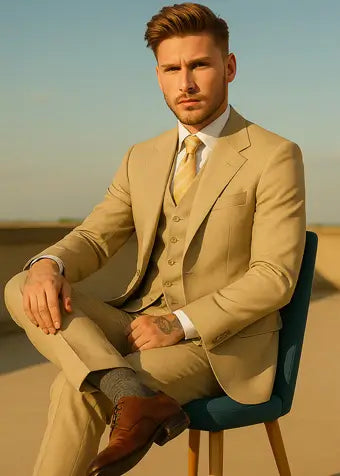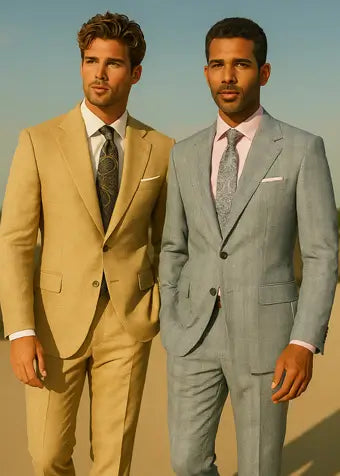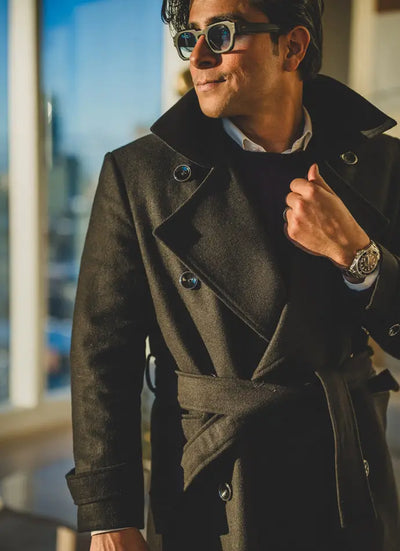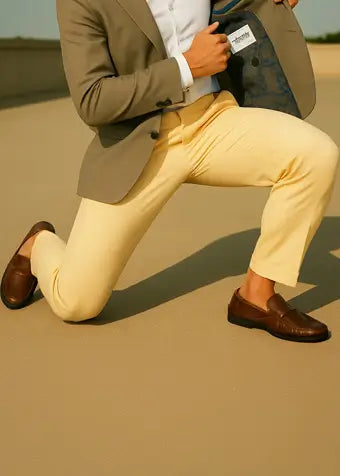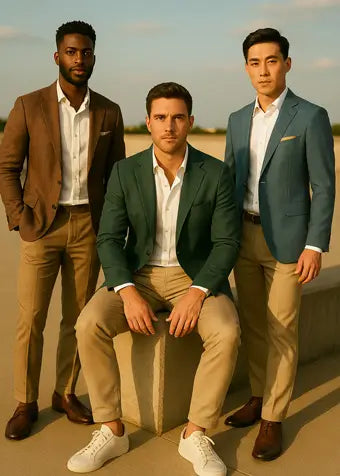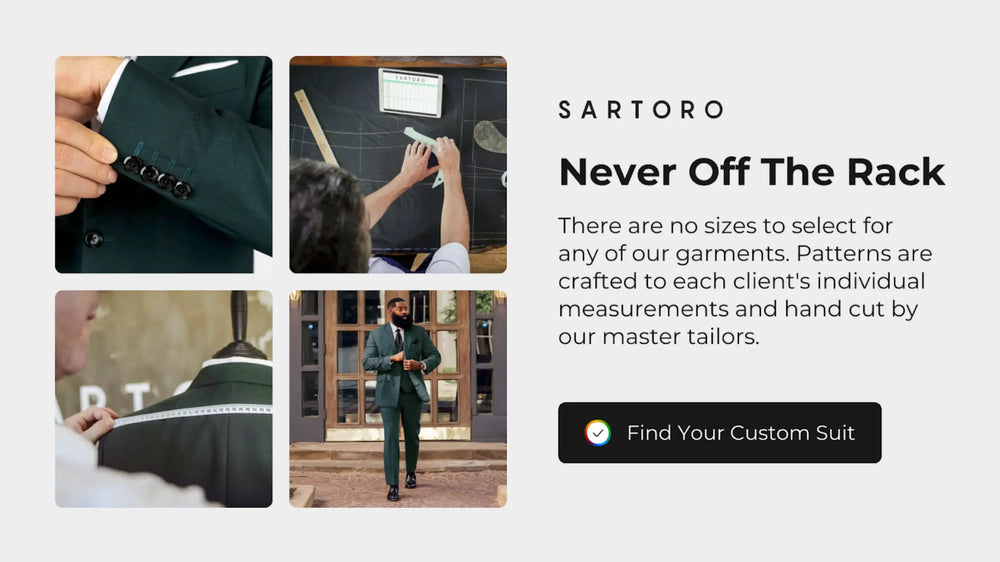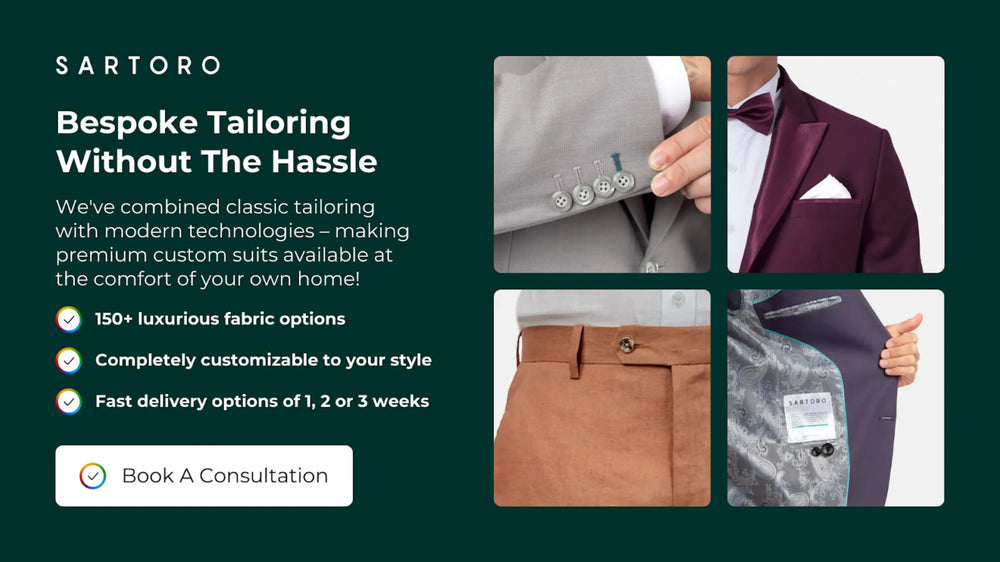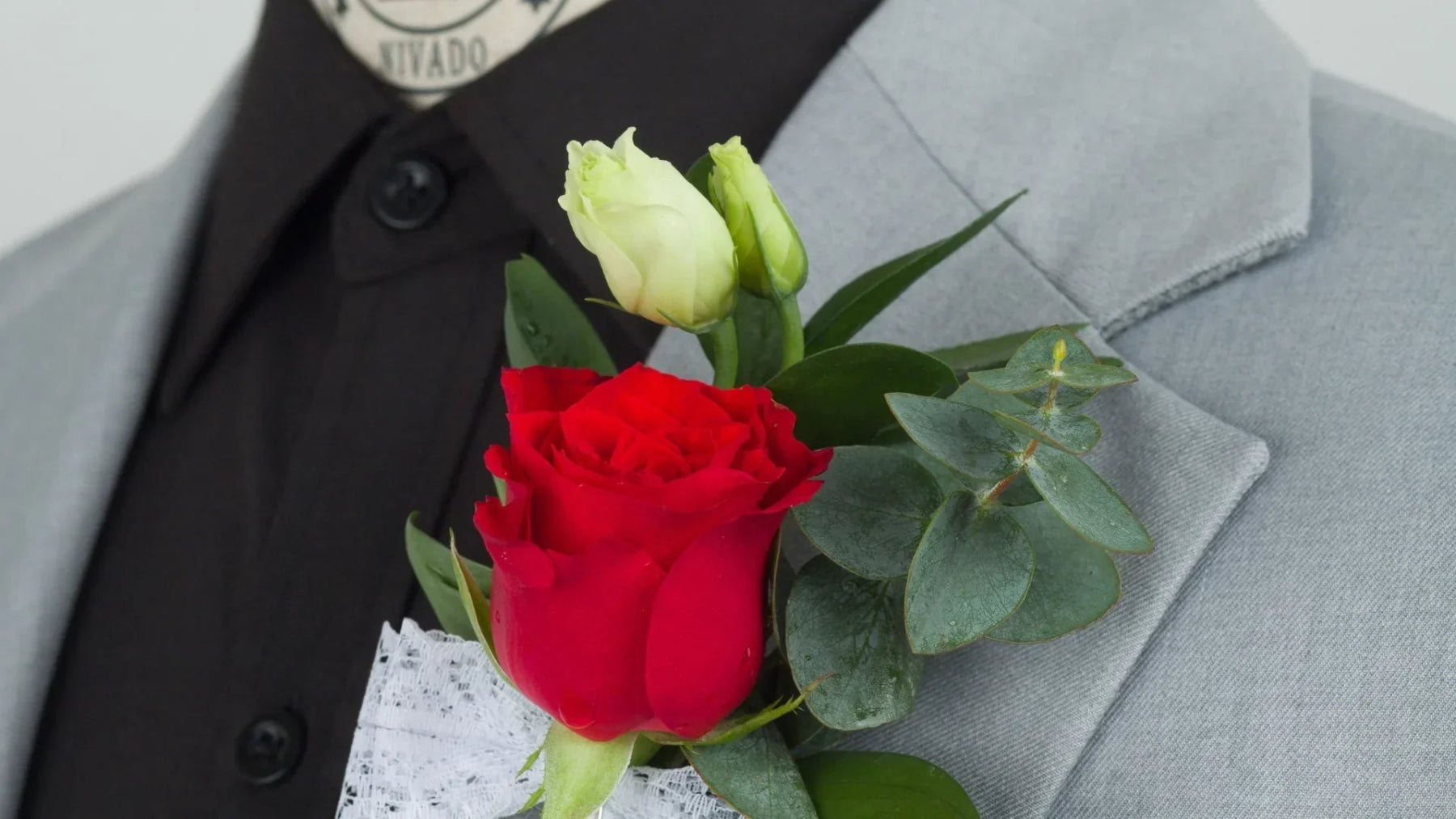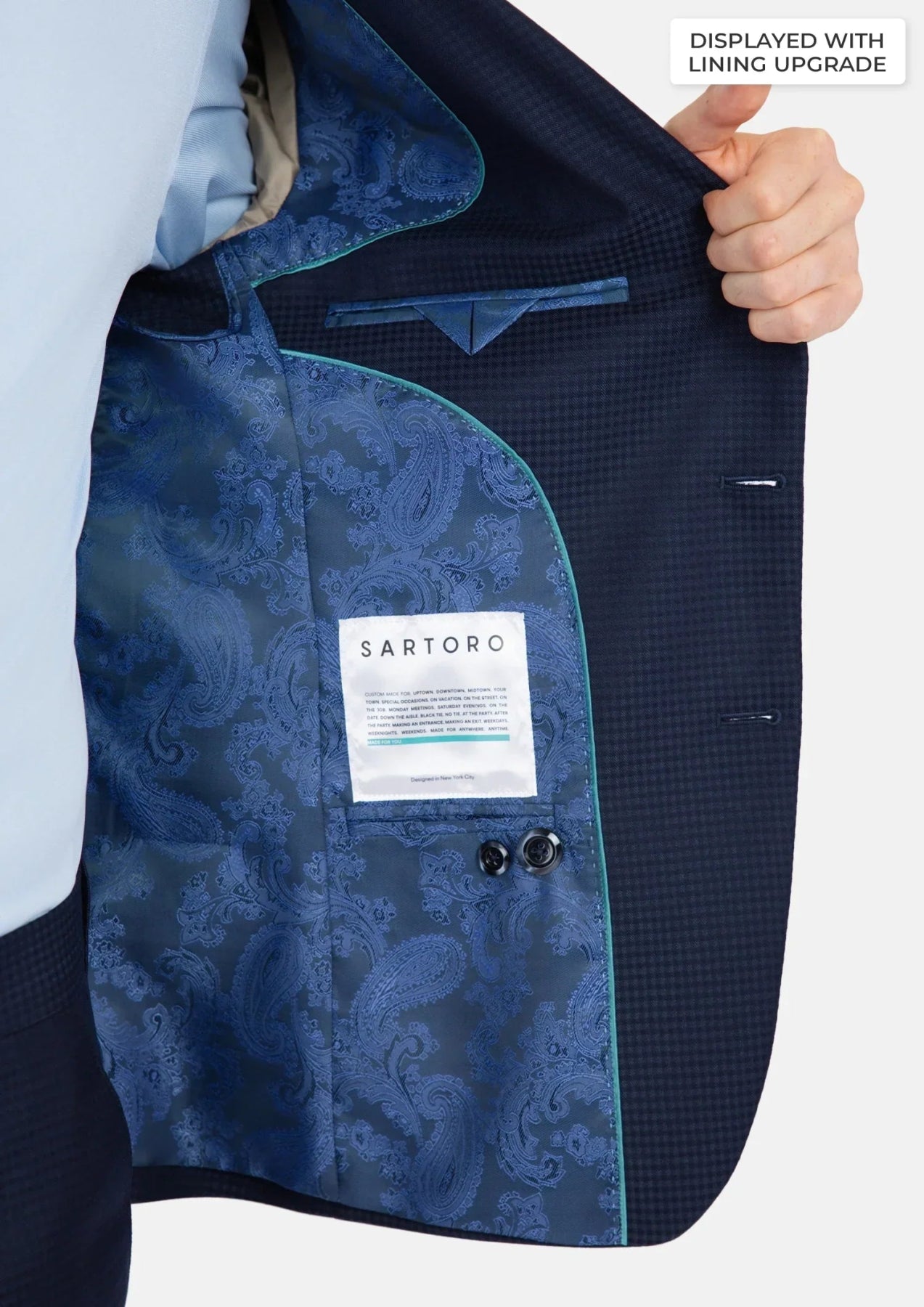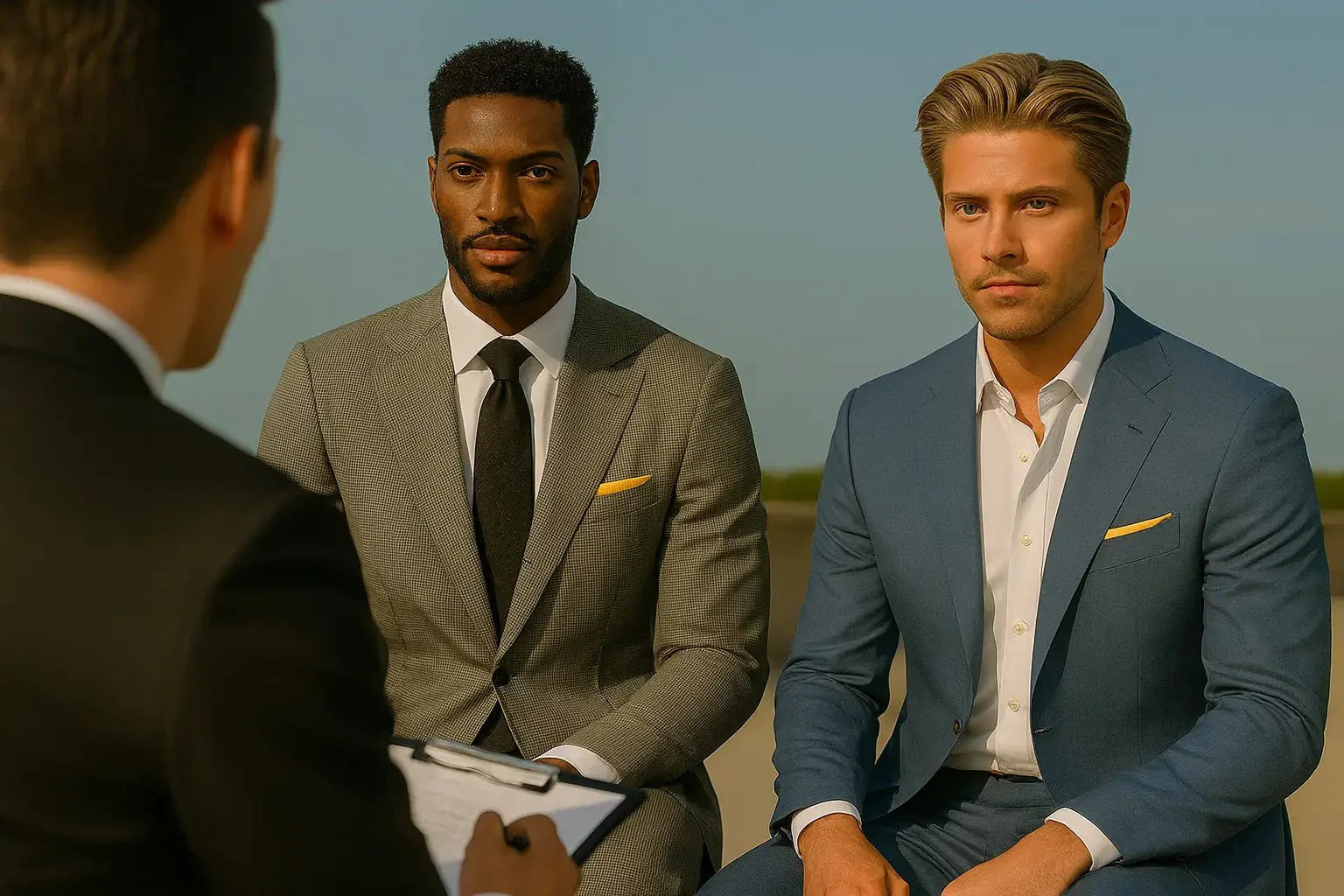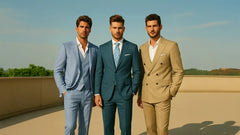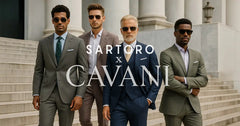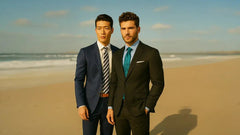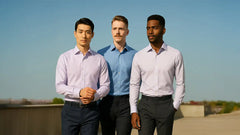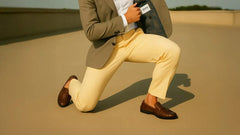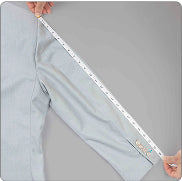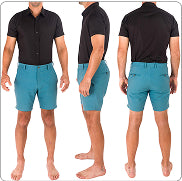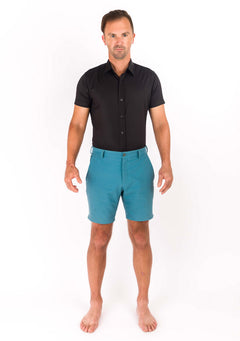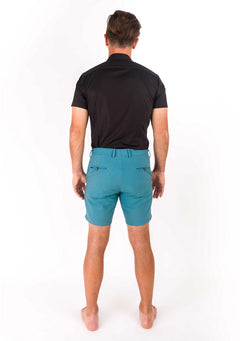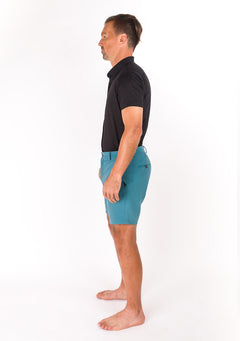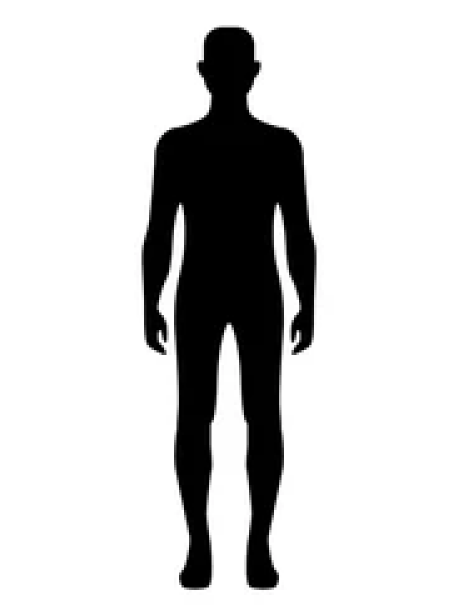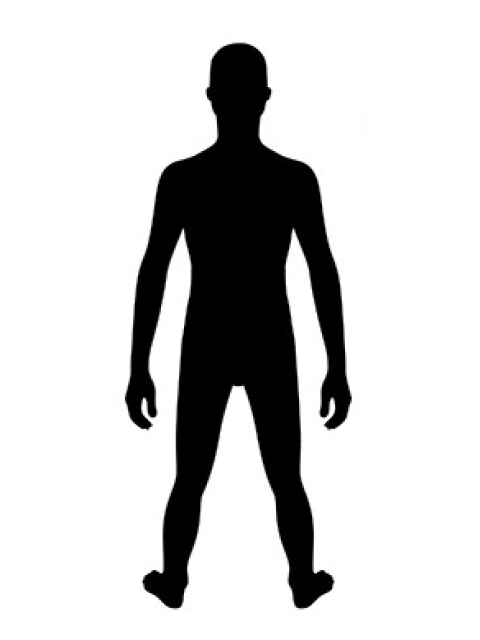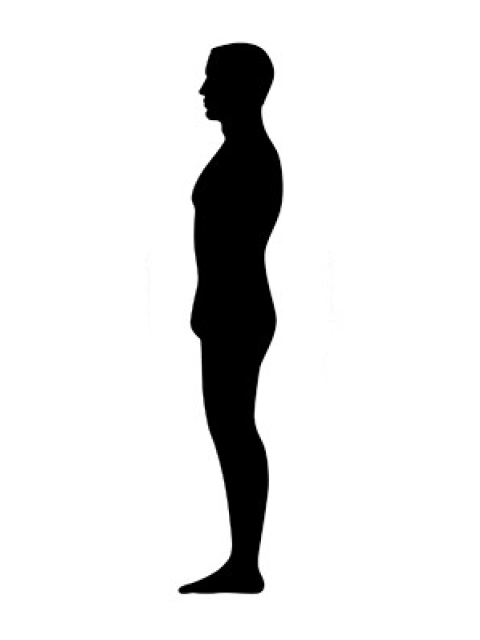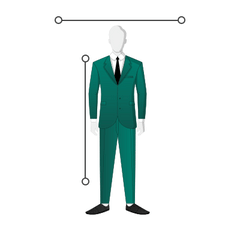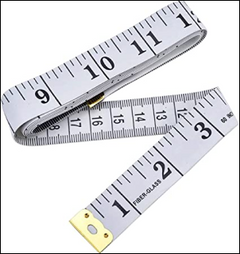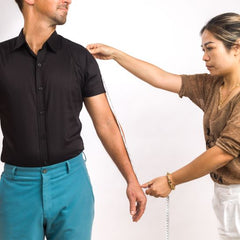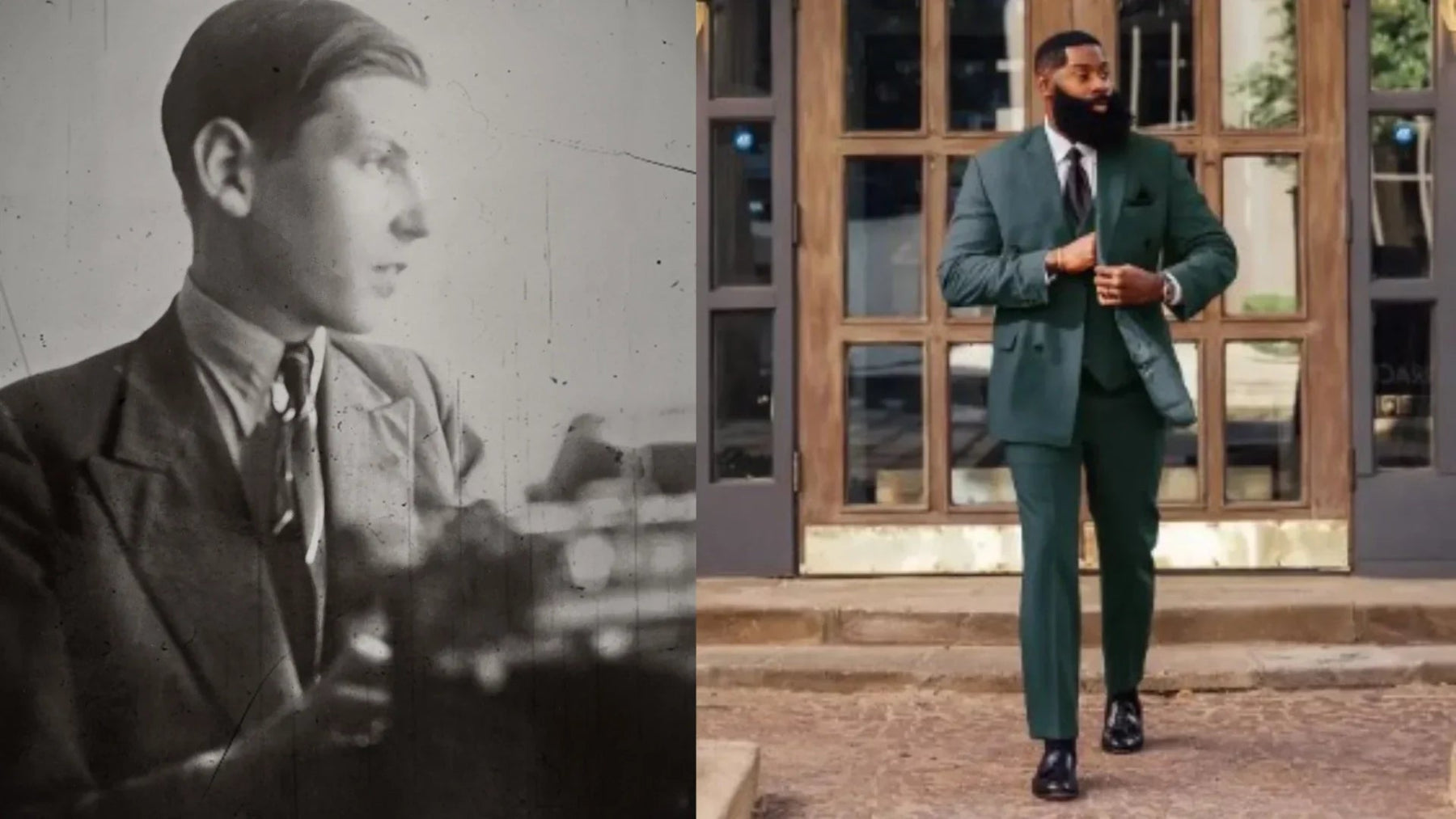
History of Suits: How Men’s Fashion Evolved Over Time
Contents
- The Evolution Of The Suit: A Historical Journey Through Men's Fashion
- 17th And 18th Century Roots Of Tailored Menswear
- The 19th Century: From Formal Dress To The Lounge Suit
- Early 20th Century Suits: Shaping Modern Style
- Post-War Suits: Slim Cuts And Structured Looks
- Minimalism And Modern Fits In The Late 20th Century
- Bold Statements: Fashion Forward Experimentation
- The 21st Century Suit: Comfort Meets Customization
Key Takeaways
- From Opulence to Understated Elegance: The history of suits shows a clear shift from heavily embellished, aristocratic attire to the cleaner, more refined silhouettes championed by figures like Beau Brummell.
- Adaptability is Key: The suit has consistently evolved across centuries, from the formal tailcoat to the versatile lounge suit, adapting to new social demands and reflecting each era's unique identity.
- Modern Customization & Comfort: Today’s suit blends heritage with innovation, leveraging technical fabrics and digital tailoring to offer unparalleled comfort and personalization, moving beyond rigid formality.
The Evolution Of The Suit: A Historical Journey Through Men's Fashion
Walk into almost any room, and chances are you’ll spot one. From a sharp boardroom to a laid-back gallery opening, the suit has been a constant in men's style for centuries. But it didn't just appear out of nowhere, perfectly formed and ready for prime time. Its journey is a wild ride through history, reflecting everything from royal decrees to rebellious youth movements.
But the journey isn’t about rigid rules or old-world tradition anymore. It’s about how tailoring has adapted to our actual lives, becoming lighter, more versatile, and personal.
This is the story of how the suit transformed from a symbol of formality into a modern wardrobe essential—and how Sartoro continues that evolution with custom fits designed for real life.
History Of Suits: Where It All Began
The suit’s origins trace a fascinating journey from aristocracy to everyday wardrobes, signaling social change as much as style evolution. For today’s modern suits for men, the evolution has led to designs balancing tradition with contemporary styling.
The Birth Of Modern Tailoring
The story starts in 19th-century England. Before this era, men’s formalwear emphasized flamboyant fabrics and ornate accessories—silk stockings and embroidered waistcoats. But with the rise of the British dandy, epitomized by Beau Brummell, taste shifted to cleaner silhouettes, wool fabrics, and a focus on impeccable tailoring over embellishment. The early suit—comprising matching jacket, waistcoat, and trousers—emerged as a symbol of restrained sophistication.
The Suit Goes Global
The basic concept quickly transcended borders. By the late 1800s, the lounge suit became the template for modern business attire. Its practicality, comfort, and versatility made it a staple not just in London, but across Europe and America.
Fabrics evolved, with tweeds for countryside pursuits and worsted wool for city life, cementing the suit’s place as daily attire for professionals. A classic example that remains timeless today is the navy blue suit, a wardrobe essential for both work and formal events.
Shaping Identity Through Style
Every era thereafter marked the suit with its signature. Whether it was the broader shoulders of the 1940s, the slim cuts of the Swinging Sixties, or the relaxed power suits of the 1980s, each reinvention reflected society’s shifting values and aspirations. Yet, the essence of the suit—precision fit, sharp lines, and the confidence it imparts—remained constant through each transformation.
17th And 18th Century Roots Of Tailored Menswear
The rich history of suits is deeply intertwined with the social transformations and artistic evolutions of the 17th and 18th centuries. During this era, tailored menswear emerged as a defining mark of refinement, a quiet revolution that would set the stage for modern sophistication.
The Birth Of The Three-Piece Ensemble
The Restoration period in England saw the introduction of the three-piece suit, popularized by King Charles II. This early version included a long coat, a waistcoat (or “vest”), and breeches. Royal decrees influenced court fashion and the broader aspirations of European society, slowly steering men away from ornate, decorated garments toward more subdued and coordinated attire.
Evolution Of Tailoring And Fit
Tailoring techniques evolved during these centuries, emphasizing a closer fit to the body—a sharp shift from previous generations' billowy, elaborate costumes. Hand-stitching and advanced cutting shaped jackets and waistcoats to flatter the male form and articulate status while ensuring mobility and comfort. This attention to detail marked the turning point where menswear became an art of subtlety and precision.
The Rise Of Fabrics And Color Choices
The increasing availability of high-quality wools and imported silks allowed for greater experimentation with texture and color. Rich, dark hues gradually replaced the effusive colors of the earlier Baroque period, lending men’s clothing an air of authority and elegance that remains influential today. As silhouettes slimmed and designs unified, the essence of the tailored suit—structure, simplicity, and self-expression—became firmly rooted in European style.
The 19th Century: From Formal Dress To The Lounge Suit
The 19th century was a watershed period in suits, marking a shift from rigid, ornate formalwear toward the beginnings of modern tailoring. This transition spoke volumes about broader societal changes—industrialization, the expansion of the middle class, and evolving concepts of masculinity.
The Age Of Tailcoats And Formality
At the dawn of the 1800s, the tailcoat defined men’s daily attire. These garments, cut away sharply at the front with long, flowing tails, embodied the era’s formal aesthetic. Paired with elaborate waistcoats and breeches, the ensemble was strictly regulated by propriety—morning attire, evening wear, and court dress all had distinct requirements.
The Rise Of Trousers And Relaxed Silhouettes
As the century progressed, tailored trousers gradually replaced breeches, and comfort became a consideration for the first time. Innovations from England, particularly in the country estates, inspired a more relaxed silhouette. Frock coats, a knee-length, fitted jacket, became popular for daywear. This reflected an early democratization of dress: clothing was no longer the exclusive domain of the aristocracy.
The Birth Of The Lounge Suit
By the late 1800s, the modern lounge suit emerged. Originating as casual wear for Britain’s upper-class countryside retreats, it featured a matching jacket and trousers—fundamental elements of today’s suit.
Fabrics became softer, patterns more varied, and lapels broader, moving men’s fashion away from rigid uniformity toward personal expression. By century’s end, the lounge suit had become the preferred choice for urban professionals, foreshadowing the sleek, tailored ensembles that defined the next era.
Early 20th Century Suits: Shaping Modern Style
As the world entered the new century, men’s fashion underwent a subtle revolution. The early 1900s marked a departure from the more ornate frock coats and morning dresses of the Victorian era, heralding the rise of the lounge suit—a streamlined, versatile garment that would become the backbone of the modern gentleman’s wardrobe.
The Edwardian Influence
The Edwardian period ushered in a taste for comfort and understated luxury. Jackets softened in structure, waists rose, lapels widened, and lighter, more breathable fabrics gained popularity. This era established the foundations of the classic three-piece suit, introducing vests (waistcoats) that matched the jacket and trousers.
The Jazz Age And Tailoring Innovation
The 1920s ignited a wave of youthful energy. Suits slimmed down and embraced bold pinstripes or checks. Trousers widened for freedom of movement, while the double-breasted jacket emerged as a power statement. The flair of the Jazz Age signaled a break from strict tradition, making way for individuality in fit and fabric.
The Utility Of The Postwar Suit
By the 1940s, the suit had adapted to a world at war. Function and form converged—jackets were often single-breasted, with padded shoulders and nipped-in waists, reflecting both military influence and material rationing. These years entrenched the suit’s reputation as the essential uniform for men pursuing business, diplomacy, or civic life.
Post-War Suits: Slim Cuts And Structured Looks
The aftermath of World War II signaled a significant stylistic evolution in suiting, forever altering the landscape of men's fashion. As prosperity returned, the suit transformed, moving away from the wider silhouettes of earlier decades toward a more refined and tailored approach.
The New Silhouette: Clean Lines And Defined Shoulders
The late 1940s and 1950s marked the rise of the modern suit as we know it. Designers embraced sharper, more defined shoulders, nipped-in waists, and narrower trouser legs. This era introduced the archetype of the slim, structured look—one that exuded professionalism and modernity, mirroring society's shifting post-war ideals.
Influence From Hollywood And Modern Culture
Cinema’s golden age played a pivotal role in popularizing the post-war suit. Stars like Cary Grant and Gregory Peck became style icons, epitomizing the tailored aesthetic on-screen. Suits became synonymous with elegance and confidence; the "leading man" look set the business and formal wear benchmarks.
Fabric Innovations And Accessibility
Technological advancements after the war brought new fabrics to the forefront, with lighter and more comfortable materials. Wool blends and synthetic fibers made high-quality suiting more accessible, allowing more men than ever to adopt the slim-cut, structured look in their day-to-day lives.
The 1970s And 1980s: Bold Colors And Wide Lapels
The evolution of men’s suits saw a dramatic transformation in the 1970s and 1980s, where individuality and flamboyance emerged. The traditional contours of suiting were reimagined as designers and wearers embraced expressive palettes and exaggerated silhouettes. These decades were defined by risk-taking in design and self-presentation, influencing the trajectory of men’s formalwear for generations.
Daring Colors And Creative Fabrics
During the 1970s, suits broke away from previous decades' somber greys and blues, welcoming a spectrum of bold hues—everything from pastel pinks and greens to deep earth tones. Unique textiles like velvet and polyester made their mark, expressing a freer, more experimental approach to fashion.
The Era Of The Wide Lapel
Wide lapels became the calling card of the decade, with jacket collars sometimes extending out to exaggerated proportions. This feature became synonymous with the disco era, mirroring the confidence and enthusiasm driving men’s fashion on and off the dance floor.
Power Dressing In The 1980s
By the 1980s, the suit’s silhouette grew even more assertive. Sharp, broad shoulders and a boxier cut embodied the “power suit.” Often paired with bold ties and assertive patterns, these looks were popularized by influential business leaders and Hollywood icons, cementing the suit as both a statement of ambition and style.
Minimalism And Modern Fits In The Late 20th Century
As the latter decades of the twentieth century arrived, the history of suits witnessed a radical reinvention. The excesses of earlier eras gave way to a stripped-back approach, with designers drawing inspiration from simplicity, sleek lines, and subtle sophistication. This period marked a shift in aesthetics and reflected changing social attitudes—favoring comfort, individuality, and versatility without sacrificing style.
Less Is More: The Minimalist Revolution
With the rise of minimalist design in the 1970s and 1980s, suits lost much of their previous ornamentation. Shoulder pads softened, lapels slimmed, and the overall silhouette became more tailored to the body’s natural lines. Neutral palettes—blacks, grays, and navies—dominated, providing an understated yet undeniably modern appearance. Designers such as Giorgio Armani became champions of this approach, crafting deconstructed jackets and lightweight materials that prioritized movement and comfort.
Bold Statements: Fashion Forward Experimentation
The turn of the century embraced both tradition and forward-thinking innovation. By the 1990s and early 2000s, suiting saw an influx of experimentation with new textiles, unconventional colors, and streamlined fits.
The introduction of stretch fabrics and blended materials allowed for greater freedom in both structure and styling, making suits more accessible and adaptable to different occasions and personalities. Fashion houses continued to challenge conventions, introducing shorter jackets, neatly tapered trousers, and other unusual takes that mirrored society’s push for self-expression through dress.
The Rise Of Versatile Tailoring
Modern fits, characterized by their clean profiles and precision cuts, underscored the importance of versatility. Suits were no longer reserved solely for boardrooms or formal events—they became an everyday staple for men who valued sophistication and practicality. Whether worn with sneakers for a casual twist or a classic dress shirt for business meetings, the suit’s adaptability became its most significant asset in an ever-evolving world of men’s fashion.
The 21st Century Suit: Comfort Meets Customization
As the new millennium unfolded, the history of suits entered a pivotal era—one defined by the seamless fusion of comfort, personal expression, and technological innovation. The modern man sought more than a uniform; he demanded a versatile wardrobe that reflected his individuality.
The Rise Of Technical Fabrics
Advancements in material science have transformed suit construction. Lightweight wools, stretch blends, and breathable linens allow unrestricted movement without sacrificing structure or formality. Suits are no longer reserved solely for boardrooms or formal occasions—they've become adaptable and wearable in diverse climates and settings, with styles like mens linen suits for weddings offering comfort and elegance for warm-weather celebrations, all while upholding the legacy of sharp tailoring.
Digital Tailoring And Personalization
Technological progress has reimagined the relationship between wearer and tailor. Digital tools and AI-driven measurement platforms have replaced old-fashioned tape measures, making custom suits accessible globally. Men can now dictate everything from fit and silhouette to fabric, lining, and detailing, ensuring their suit is a valid extension of their personal style.
Beyond Formality: The Versatile Suit
This new era also sees the suit transcending traditional boundaries. Single- and double-breasted jackets appear alongside unstructured blazers, and separates are mixed for smart-casual ensembles. Custom options such as lapel width, pocket type, and button style empower individuals to stand out for business, weddings, or casual gatherings—whether you're selecting a sharp wedding suit for men, coordinating a groomsmen suit, or crafting a versatile everyday look.ook.
The 21st-century suit is a dynamic symbol, embodying both the comfort demanded by contemporary lifestyles and the timeless elegance that anchors the history of suits.
Final Thoughts
The suit has traveled an extraordinary path—from ornate royal attire to a symbol of everyday sophistication and individuality. Each era reshaped its meaning and design, proving that the suit is more than clothing; it’s a cultural reflection of changing times, values, and technology. Today, the modern suit balances timeless elegance with comfort and customization, empowering individuals to express personal style while embracing functionality. Sartoro continues this legacy, delivering custom-fit suits designed to fit seamlessly into contemporary lifestyles, ensuring that every man can own a truly his own look.
Read also:
- What Makes A Suit? A Guide To Every Key Piece
- How To Wear And Style A Suit
- Suit Trends 2025: What's In And What's Out
Frequently Asked Questions About The Evolution Of The Suit: A Historical Journey Through Men's Fashion
What impact did the Industrial Revolution have on suit fashion?
The Industrial Revolution streamlined textile production, making suits more accessible and affordable. Ready-to-wear suits emerged, shifting fashion from aristocratic exclusivity to broad public availability, and setting the stage for modern tailoring.
How did the suit become a symbol of professionalism?
As society transitioned from aristocratic to business-oriented structures, the suit became shorthand for respectability and competence in the workplace. Its clean, structured lines conveyed discipline, reliability, and attention to detail—qualities prized in professionals.
What are the key features of Victorian-era suits?
Victorian suits were defined by fitted frock coats, high collars, waistcoats, and meticulously tailored trousers. The era prioritized formal, structured silhouettes and luxurious fabrics, reflecting both the time's social hierarchies and sartorial rigor.
What were the major changes in suit fashion during the 1960s?
The 1960s saw a break from tradition—suits slimmed down, lapels grew narrower, and colors became bolder. Mod culture and youth movements spurred experimentation, introducing lightweight fabrics and vibrant patterns that echoed the decade’s spirit of rebellion.
In what ways did the 1980s power suit reflect the business culture?
The 1980s power suit—with its broad shoulders, sharp lines, and statement-making presence—mirrored an era obsessed with ambition and corporate success. It projected authority, confidence, and a drive for upward mobility in the burgeoning business world.
What is the significance of the Italian suit makers on modern suiting?
Italian suit makers elevated suiting with softer construction, lightweight fabrics, and a focus on comfort without sacrificing elegance. Their craftsmanship and signature style have redefined global tailoring, making luxury and artistry central to modern men’s fashion.



















